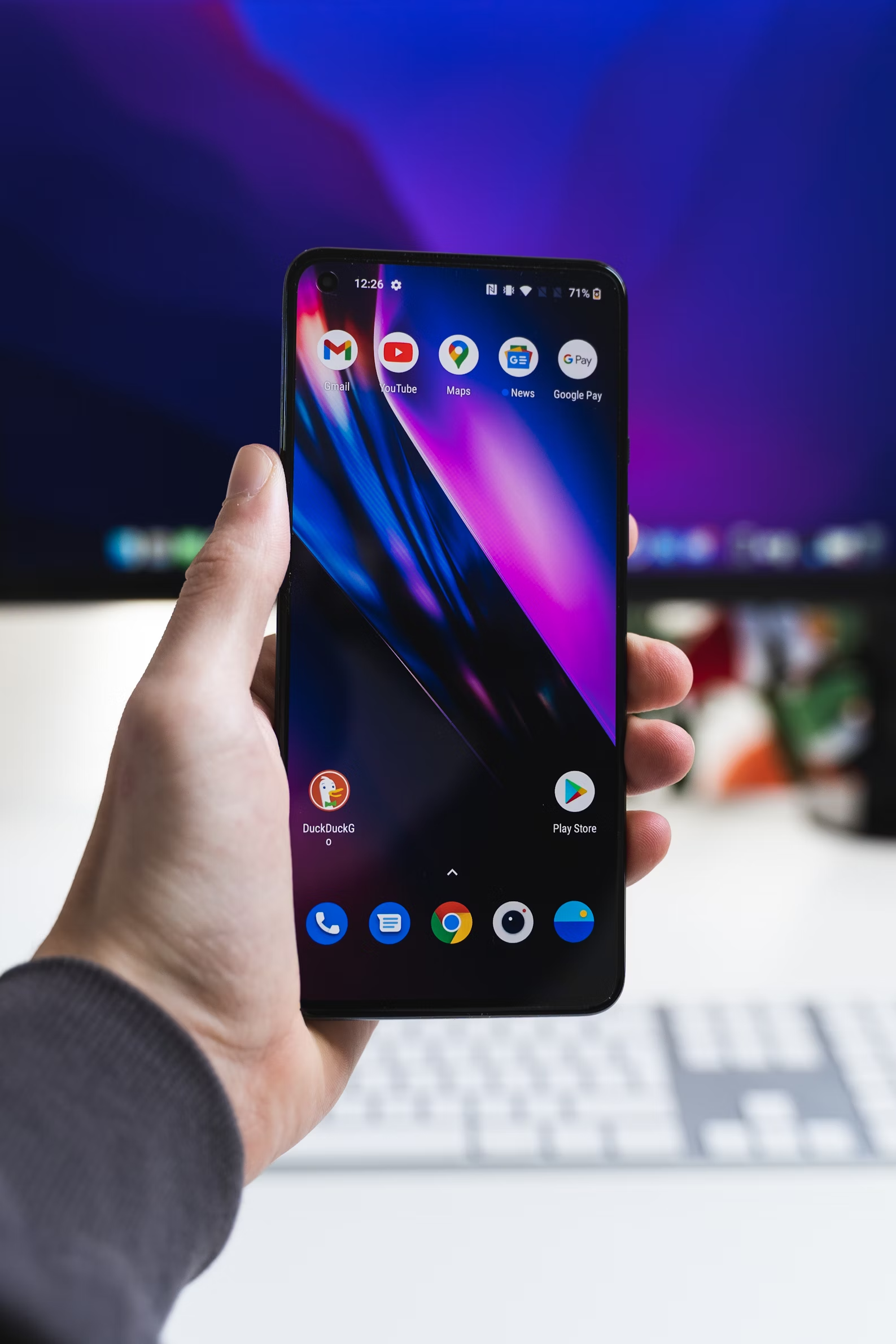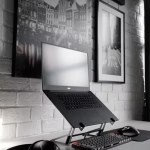Finding the ideal Android phone can be challenging, as preferences vary widely, and no single device perfectly meets every need. However, there is likely a smartphone that closely aligns with your requirements. Among the vast array of options, we’ve highlighted our top choices, including the Google Pixel 8A, which stands out as our top recommendation. Each of these selected phones offers unique benefits, and we’ve presented them based on thorough testing and evaluation.
Best Android Phones: 10 Top Choices Reviewed!
Google Pixel 8A
The Google Pixel 8A stands out as one of the best Android phones for its blend of quality and value. Featuring a sleek design in the vibrant Aloe color, it packs a powerful Tensor G3 processor that easily handles games and multitasking. The Phone’s 64-MP primary camera and 13-MP ultrawide lens deliver excellent photo quality, even compared to higher-priced models. Its 6.1-inch OLED display offers a sharp 120-Hz refresh rate and sufficient brightness. With wireless charging, IP67 water resistance, and fingerprint and face unlock options for under $500, the Pixel 8A also benefits from seven years of software updates.
However, the Pixel 8A does have a few limitations. The battery life is decent but not outstanding, often requiring a charge for heavy users by the end of the day. Additionally, Google’s Real Tone feature, designed to capture darker skin tones better, hasn’t performed as well as in previous models. Despite these minor issues, the Pixel 8A remains a top choice for those seeking a high-quality smartphone at an affordable price.
Samsung Galaxy S24 Series
The Samsung Galaxy S24 series, encompassing the S24, S24+, and S24 Ultra, leads the flagship Android market with its latest Qualcomm Snapdragon 8 Gen 3 chipset, delivering outstanding performance. Each model features vibrant AMOLED displays with a 120-Hz refresh rate and offers over a day’s battery life with typical use. The S24 is compact, while the S24+ and S24 Ultra provide extended battery life, with the Ultra model also including an integrated S Pen. All models benefit from seven years of software updates, ensuring long-term value.
Regarding photography, the S24 and S24+ have versatile triple-camera systems and a high-quality selfie camera. At the same time, the S24 Ultra adds a fourth camera with 5X optical zoom for enhanced imaging. Although the camera performance is impressive, Samsung’s AI features might not match the level of Google’s Pixel phones. Starting at $800, the Galaxy S24 series is available at retailers like Amazon and Best Buy, offering a premium experience with advanced features for everyday users and avid videographers.
OnePlus 12R
For those who value aesthetics and unique design, the Nothing Phone (2a) and Phone (2a) Plus are standout choices. Both models feature the distinctive Glyph LED lights on the back, illuminating notifications, and can be programmed to interact with apps like timers. Priced at around $349, the Phone (2a) offers a stylish alternative to the flagship Nothing Phone (2) without the premium cost. Its sleek Nothing OS interface further sets it apart from other devices.
Thanks to the MediaTek Dimensity 7200 Pro chipset, performance is solid and handles apps and games efficiently. The 6.7-inch AMOLED display with a 120-Hz refresh rate is sharp and smooth. The Phone (2a) supports NFC and includes an in-display fingerprint sensor, with Nothing promising three Android OS updates and four years of security patches—impressive for a phone under $400. However, camera performance is average, and Verizon support is lacking. You must enroll in Nothing’s developer program in the US to purchase the device. Despite these drawbacks, the Nothing Phone (2a) delivers a stylish and well-performing option for those seeking something distinctive.
CMF Phone 1
The CMF Phone 1, a subbrand of Nothing, offers exceptional value for just $199. This budget-friendly smartphone stands out with its unique features, such as customizable back panels that can be swapped using the included screwdriver and a versatile Accessory Point for attaching items like a lanyard or kickstand. Despite its low price, the CMF Phone 1 (9/10, WIRED Recommends) delivers impressive performance with a capable camera system and a battery that can last up to two days under average usage. Its 6.67-inch AMOLED display is sharp and smooth, with a 120-Hz refresh rate and decent brightness.
However, there are a few limitations to consider. The CMF Phone 1 is available in the US only through a beta program, requiring users to sign up and be accepted before purchasing. Its carrier compatibility is inconsistent; while it performs well on T-Mobile and AT&T, it may offer suboptimal 5G coverage and is not recommended for use on Verizon. Additionally, it lacks NFC functionality, so contactless payments are not an option. Despite these drawbacks, the CMF Phone 1 remains a standout choice for those seeking the best value in an affordable Android phone.
Motorola Razr+
The Motorola Razr+ (2024) is a standout choice for those who favor compact folding phones that fit easily into small pockets. It features an impressive 4-inch cover screen for app launches, widget navigation, and mini-games, with the benefit of previewing the camera for well-framed selfies and group shots. When unfolded, the Razr+ offers a standard Android experience with its 6.9-inch AMOLED display and the Snapdragon 8s Gen 3 chipset, a slightly less powerful version of the Snapdragon 8 Gen 3 found in other top Android phones.
Despite its strong performance, the Razr+ may require recharging before the day ends for heavy users, and its camera processing can be slower than some might like. Still, it combines practicality with style, offering features such as wireless charging, IPX8 water resistance, and compatibility with all major US networks. Priced at $1,000 at retailers like Amazon, Best Buy, and Motorola, the Razr+ is a compelling option for those seeking a high-quality folding phone in a compact form.
Motorola Moto G 5G Power
The Motorola Moto G 5G Power (2024) is arguably the best budget phone Motorola has ever produced, offering exceptional value at just $300. Its design features a faux leather back that lends a touch of luxury to its slim profile. Equipped with a MediaTek Dimensity 7020 processor and 8 GB of RAM, the Moto G 5G Power delivers smooth performance, efficiently handling most apps and games despite occasional minor hiccups. The 6.7-inch LCD screen boasts a 120-Hz refresh rate and good brightness, enhancing the user experience. Notably, this model includes NFC for contactless payments and supports wireless charging, setting it apart from other phones in its price range.
However, the Moto G 5G Power has a few limitations. It is slated to receive only one Android OS update, upgrading to Android 15, although Motorola does promise three years of security updates. Additionally, the PhonePhone comes with a fair amount of pre-installed bloatware, though most can be removed. Despite these drawbacks, the Moto G 5G Power remains a top choice under $300, with notable features like wireless charging and a robust battery life, making it a strong contender in the budget smartphone category.
Google Pixel 9 Fold
Although Google is set to unveil the Pixel 9 Fold on August 13, making it advisable to hold off on purchasing the Pixel Fold (8/10, WIRED Recommends) for more than $1,200, it remains my top choice for a book-style folding phone. The Pixel Fold offers a practical 5.8-inch external screen that functions like a standard phone display, albeit with some added weight. When you need more screen real estate, unfolding it reveals a spacious 7.6-inch display, ideal for enhanced app experiences such as Gmail’s dual-pane view and efficient split-screen multitasking.
This larger screen can significantly enhance productivity and usability. The Pixel Fold excels with its impressive camera system, vibrant displays, solid battery life, and intelligent software. However, its steep price tag of $1,799 might be a deterrent, and there are concerns about the durability of folding devices. Despite these issues, I thoroughly enjoyed using this first-generation device, which exemplifies the future direction of smartphones. Check out our guide on the best folding phones for those exploring additional alternatives.
Nothing Phone (2a) & (2a+)
For those seeking a stylish and unique phone, the Nothing Phone (2a) and (2a Plus) stand out with their distinctive Glyph LED lights that illuminate notifications and can interact with various apps. Priced at $349, the Phone (2a) offers much of the flair of the flagship Nothing Phone (2) at a more accessible cost, complemented by the sleek Nothing OS interface. This design makes it a visually appealing choice among standard devices.
The Phone (2a) delivers solid performance with its MediaTek Dimensity 7200 Pro chipset, handling apps and games efficiently. Its 6.7-inch AMOLED display with a 120-Hz refresh rate ensures sharp visuals. The Phone also supports NFC and features an in-display fingerprint sensor. While it promises three Android OS updates and four years of security patches, its camera performance is average and lacks Verizon support. To purchase the Phone (2a) in the US, you must enroll in Nothing’s developer program. Despite these drawbacks, the Phone (2a) remains stylish and well-performing for those looking for something distinctive.
Asus ROG Phone 8 and Zenfone 11 Ultra
The Asus ROG Phone 8 and Zenfone 11 Ultra provide impressive features for gamers and audiophiles. Both phones feature large 6.78-inch AMOLED displays with high refresh rates, IP68 water resistance, Qualcomm’s Snapdragon 8 Gen 3 chipset, and a robust 5,500-mAh battery. Notably, they include a headphone jack, which is becoming rare in flagship Android devices. While their camera systems might not fully justify their high price, these phones excel in audio quality and overall performance.
The ROG Phone 8 has additional gaming features, including dual USB-C ports supporting the Asus ROG AeroActive Cooler X. This cooling accessory helps manage temperatures during intensive gaming, improving performance and smooth gameplay. Despite these advantages, both models offer only two Android OS upgrades and four years of security updates, which, while an improvement over previous Asus models, still falls short compared to some competitors. The ROG Phone 8 is priced around $1,100, and the Zenfone 11 Ultra is available for about $900, with various discounts online.
Xiaomi 14 Ultra
The Xiaomi 14 Ultra is a standout choice for photography enthusiasts outside the US. WIRED reviewer Simon Hill praised it as the best camera phone he has ever used. It features a design similar to the Xiaomi 13 Ultra with a prominent round camera module and a faux leather back. The Phone offers a sharp, bright display, strong battery life, and fast charging. It also supports all Google apps and services, ensuring compatibility with banking apps and Android Auto.
The Xiaomi 14 Ultra’s main draw is its 50-MP primary camera with a large 1-inch sensor, providing superior light capture for sharper details, brighter low-light images, and reduced grain. A dedicated photography kit with a grip and physical controls is also available for enhanced photography experiences. Although it’s not officially supported in the US, the Xiaomi 14 Ultra is accessible in other regions, priced at £1,015 on Amazon UK, $849 at Giztop, and €1,299 at Xiaomi UK.
Conclusion:
The top Android phones of the year offer diverse choices for various needs. The Google Pixel 8A provides exceptional value with its Tensor G3 processor, excellent camera system, and long-term software support for under $500. Samsung’s Galaxy S24 series excels with its high performance, vibrant displays, and extensive update commitment, making it ideal for premium users. Unique designs are showcased in the Motorola Razr+ and Nothing Phone (2a), while budget-friendly options like the CMF Phone 1 and Moto G 5G Power deliver impressive features at lower prices. The Xiaomi 14 Ultra stands out for its top-tier camera, though it’s not available in the US, completing a well-rounded list of the best Android phones.



